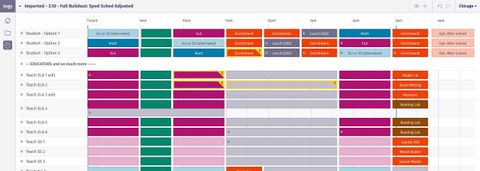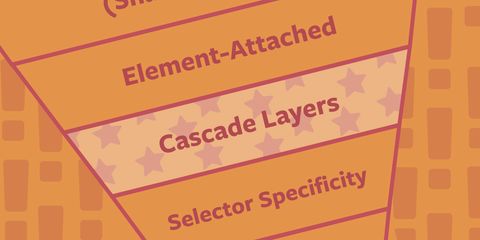What’s the impact of aiming for 100% test coverage?
100% test coverage is a contentious metric! In this piece, Olu explores the impact of pursuing it.
Page 7 of 15

100% test coverage is a contentious metric! In this piece, Olu explores the impact of pursuing it.

Keeping your project dependencies up to date can become an unwieldy task when Dependabot opens a dozen pull requests every week. We present an alternative approach that uses only one scheduled pull request for all upgrades.

This episode went a little off the rails…
I talk with Claire and Steph about changes to the Container Query syntax, our feelings about web components, named CSS colors, how much we like eating cookies, and other wild tangents.

CSS is evolving rapidly and new features come online all the time. Join Morten & Miriam to talk about what CSS layers and scope are all about and how they will change how we work with and think about the cascade in the future.

Whole-School Design Thinking & Scheduling
TimeDesigner helps school teams rapidly create multiple scheduling scenarios from various perspectives, and plan ahead for future iterations. OddBird helped Tegy plan, design, develop, launch, and maintain their school scheduling web app using CSS Grid and custom property wizardry on the front-end, and well-tested Django/Python on the back-end. Currently, the…

Cascade layers are a new CSS feature
that allows us to define
explicit contained layers of specificity,
so that we have full control over
which styles take priority in a project
without relying on specificity hacks or !important.
This guide is intended to help you fully understand
what cascade layers are for,
how and why you might choose to use them,
the current levels of support,
and the syntax.

Sondra and Miriam chat with Sophia about using her ORCA methodology (Objects, Relationships, CTAs, and Attributes) in OddBird’s work with clients. We dive into the ways OOUX facilitates a flow of conversation between designers and back-end developers, and get a sneak peak of Miriam’s work on the new container query…

Miriam talks to Now What? about why the internet looks the way it does, why designers and developers need to collaborate and how the future of the web must be built around inclusivity and respect.

A fireside chat
There are often tall walls between designers and developers, sometimes with only one significant handoff moment during a sprint. We discuss the role of the ‘design engineer’ and what it means for workflows, collab with their product team, and the end-user experience.

A podcast focusing on front end development but also covering a wide range of web development and design topics. We talked about CSS, Sass, and work being done in the W3C CSS Working Group.

Igalia’s Brian Kardell sits down to chat with Miriam and Rachel Andrew about who works on standards, and who pays for that work.

In this episode of Syntax, Scott and Wes talk with Miriam about all things CSS – container queries, layers, scoping, and more!

I talk with Claire and Steph about my journey into webdev and onto the CSSWG, what I find frustrating about how others use CSS, and the three specs I’m working on.

Adding Container Query tests to CSS @support
Working on a new CSS feature like Container Queries, one of the most important considerations is to ensure a “migration path” – a way for developers to start integrating the new code, without breaking their sites on legacy browsers. That looks different depending on the feature, but can often include…

I chat with Bruce Lawson & Vadim Makeev about Sass & Susy, CSS Layers & compatibility, Container Queries, and the CSS Working Group.